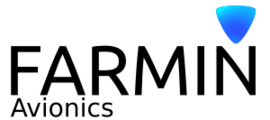Project Farmin
| This article or section contains out-of-date information
Please help improve this article by updating it. There may be additional information on the talk page. |
 | |
| Started in | 01/2015 |
|---|---|
| Description | Canvas and MapStructure based Flight deck Framework (see: Canvas Animation Framework/Canvas MFD Framework) |
| Maintainer(s) | www2 |
| Contributor(s) | www2 |
| Status | Early Prototyping for the FG1000 PFD |
| Folders | $FG_ROOT/Aircraft/Instruments-3d/Farmin |
| Website | https://github.com/www2000/Farmin |
Project Farmin is a project aiming at making an aircraft independent framework simulating the Garmin flight decks (G500(H), G600, G900X, G950, G1000(H), G2000, G3000, G5000(H)).
Currently the focus is on the G1000 that is in use on 1 or 2 engine props and jets, for example Cessna 172R/S, 208/208B Caravan, Mustang and Embraer Phenom.
Background
Development
| Status | Farmin | Garmin | Family | Manual on Garmin site* | Extra info |
|---|---|---|---|---|---|
| FG500 | G500 | G500/G600 | True | None | |
| FG500H | G500H | G500/G600 | True | Helicopter version of the FG500/G500 | |
| FG600 | G600 | G500/G600 | True | None | |
| FG900X | G900X | G1000 | False | Flight deck for kitplane | |
| FG950 | G950 | G1000 | True | OEM/after market | |
| FG1000 | G1000 | G1000 | True | None | |
| FG1000H | G1000H | G1000 | True | Helicopter version of the G1000 | |
| FG2000 | G2000 | G3000 | True | 2 Screens and 1 touchscreen | |
| FG3000 | G3000 | G3000 | True | 3 Screens and 2 touchscreen | |
| FG5000 | G5000 | G5000 | False | Up to 4 screens and 4 touchscreen |
- This mean not that the manuals are on the web
Components
MFD
Top level helper class managing all related components.
ImageSource
An ImageSource will be an invisible Canvas representing the video/graphics output of a display.
var ImageSource = {
new: func(x,y) {
var m = {parents:[ImageSource]};
m.canvas = canvas.new({
"name": "ImageSource-"~name,
"size": [x, y],
"view": [x, y],
"mipmapping": 1
});
return m;
},
del: func() {
},
};Screen
A Screen will merely be a placeholder for another Canvas referenced via canvas:// - so that arbitrary placements can be used to display a MFD screen.
var Screen = {
new: func() {
},
attach: func(source) {
},
del: func() {
},
};ImageSourceSelector
A helper class to manage multiple image sources and hook them up to screens - i.e. for allowing MFDs to be shown on different screens.
Screen Shots
Some screen shots are posted on the forum thread (see below)
Related content
Forum topic
- Project Farmin [Garmin Flightdeck Frame work] – Development topic on the forum